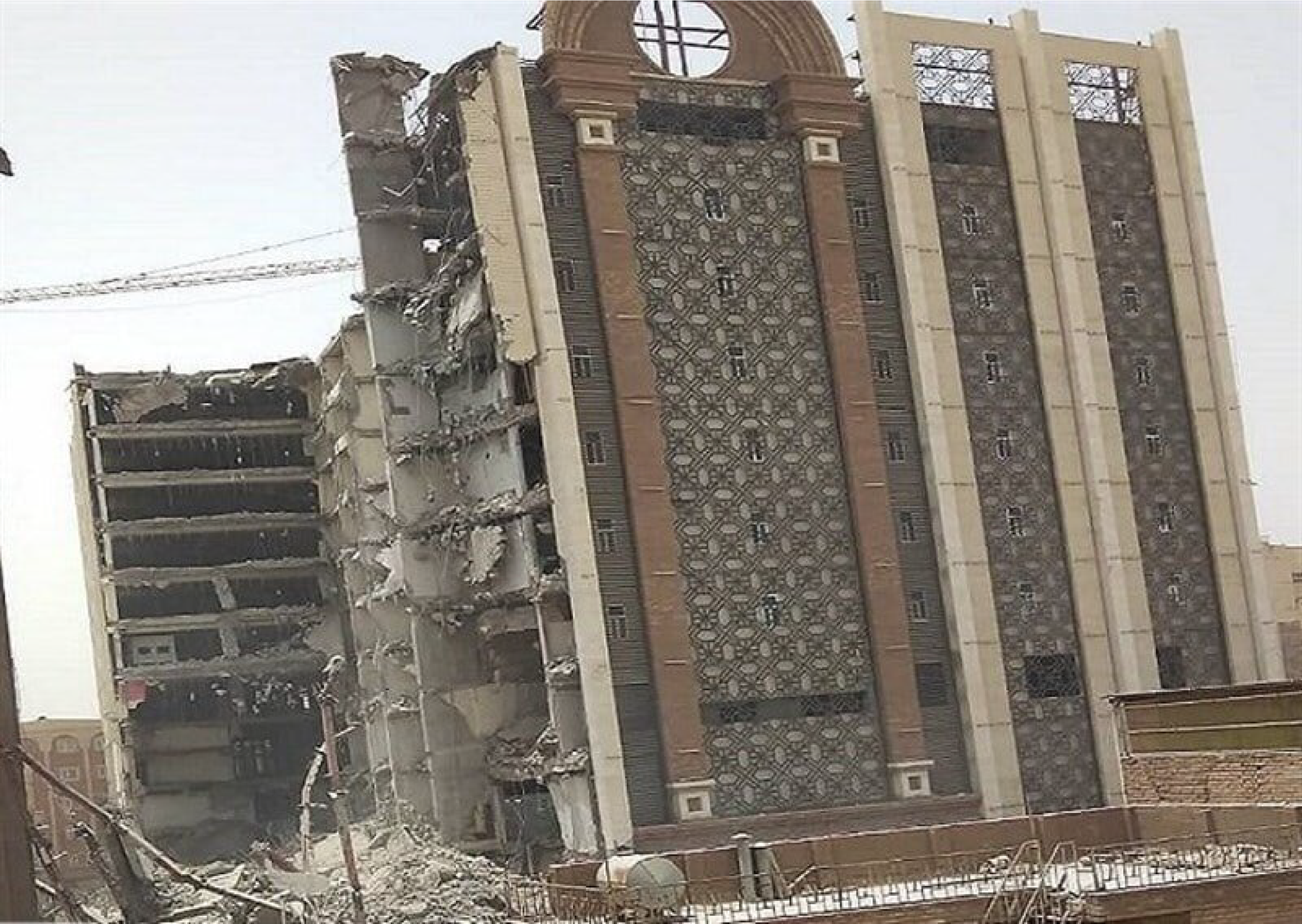The memory of the collapse of the Plasco building in Tehran in 2017 has not been erased from the Iranian minds (this event was one of the most shocking technological disasters in Iran), Reference Heidari, Sheikhi and Jafari1 when, another catastrophic incident, the collapse of the newly constructed Metropol building in Abadan city in 2022, occurred. The dimensions of this incident were so broad that it was at the top of the breaking news in national and international media. The collapse of the Metropol building occurred on May 23, 2022, at 12:40 pm in the center of Abadan. As a result of this incident, a part of Metropol Tower No. 2 collapsed. As of June 7, 2022, a total of 43 people were killed and 37 injured in this incident. This building was a part of the Twin Towers project of Abdulbaghi Metropol Holding. This collapse was due to structural failure due to a violation of technical regulations and standards. Thirteen of the culprits of this incident have been arrested. The instability of the structure was the main cause of this incident (Figure 1).

Figure 1. The collapse of the Abadan Metropol building.
The collapse of the Metropol building marks the continuous occurrence of similar catastrophic incidents within building construction in the country, despite the special emphasis of the authorities and institutions on following up and complying with the standards of building construction. This raises the following questions: What standards do building construction and contractors, in general, follow in Iran? Why does the collapse of buildings in Iran keep repeating despite the emphasis on standardization and prosecution of the culprits of these incidents? What institutions, persons, and officials should be accountable to the people in this field? According to experts and city officials, the possible causes of the Metropol building incident are:
Expensive Housing and Unsafe Structures
The increase and density of the population in big cities, the high cost of housing and the increase in the inflation rate, the increase in the price of construction materials, and other related issues have fueled other challenges in construction and urban development in recent years. The high cost of construction materials and the outflow of private sector capital have unpleasant consequences in the construction of residential and non-residential structures. As a result of the high cost of building materials, contractors, and construction companies seek to reduce the costs of building structures, and often regardless of the consequences of this decision, they consider the lowest budget for building construction and get the most benefit; The result of this action is the use of low-quality materials, nonstandard structures, and catastrophic incidents, which ultimately cost not only people’s pockets but also people’s lives.
Standards That Are Never Met
Neglecting technical and engineering standards in construction, including the use of low-quality, nonresistant, and nonstandard materials, lack of supervision during the construction of buildings, and not following legal procedures in issuing building permits are among the things that lead to the creation of nonstandard structures. Abadan Metropole building is one example, where the legal procedure for issuing an operating permit has not been followed. According to the head of the Khuzestan Province Building Engineering System Organization, the municipality was informed about “flaws such as non-compliance with the rebar cover, the deformation of some beams, and the buckling of some columns of the Metropole building project 1 mo before the incident, and the order to stop the project was given, but the order was not implemented”. Reference Behnam2
Failure to Monitor the Implementation of Instructions and Failure to Respond
Despite the numerous regulations and directives regarding building construction; the construction of unsafe and nonstandard buildings, the use of cheap and low-quality materials, nonresistant and disproportionate to the weight of the structure, along with the negligence of the relevant authorities to control all technical circumstances before issuing construction and operating permits, has resulted in serious challenges in building safety, jeopardizing the safety of citizens. Reference Khan, Domada and Huang3 Numerous incidents, especially in the past 5 y, such as the Plasco building incident in 2017, the Sina Clinic fire in 2019, and the collapse of the Abadan Metropol building in 2022; apart from the lack of compliance with technical and engineering standards, highlights the lacking supervision and accountability of the relevant authorities and managers. Reference Aghakouchak, Garivani and Shahmari4 Re-occurrence of these incidents; mandates compliance with laws and regulations, construction standards, and disaster management more than ever, and raises the question of responsibility among persons or institutions.
The disaster of the collapse of the Metropol building has once again increased the criticism of the construction process in the country and the possibility of subsequent similar incidents. This painful disaster shows the ineffectiveness of the monitoring system in safe construction. It is necessary to consider a mechanism based on the disaster management cycle, such as an Incident Command System (ICS), in building construction in the country, to prevent subsequent incidents, and to avoid management confusion. Furthermore, paying attention to the objectives of the “Sendai Framework for Disaster Risk Reduction 2015-2030”, especially risk governance in the construction industry, should be emphasized. It is still too early to make a final judgement, but citizens have the right to ask: Why has no action been taken to stop the construction despite the warnings (A few months before the incident)? What is the role of the engineering system organization? Who are the responsible actors ? Why did the rescue forces arrived late and not have enough equipment and dozens of other questions that prevent the “Metropole Tower” incident in Abadan erasing from the memory of Iranians anytime soon.
Author Contribution
All authors contributed equally to this study.
Funding
The author(s) received no financial support for the study.
Competing interests
The authors declare that they have no competing interests.



